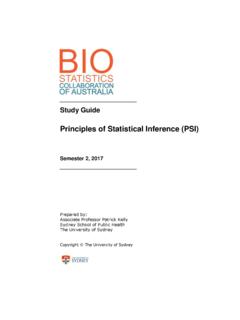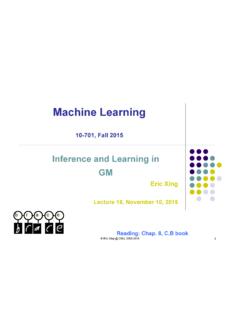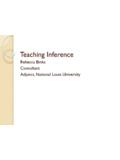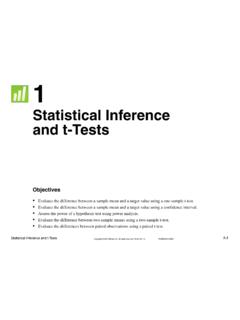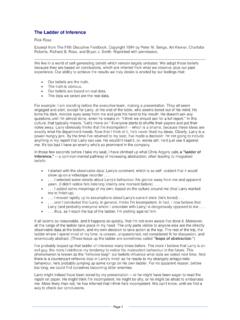Transcription of Screening for Collusion as a Problem of Inference
1 APRIL 30, 2013 FORTHCOMING IN OXFORD HANDBOOK ON INTERNATIONAL ANTITRUST ECONOMICS EDITORS ROGER D. BLAIR AND D. DANIEL SOKAL Screening for Collusion as a Problem of Inference Michael J. Doane Competition Economics LLC, Emeryville, California 94608, Luke M. Froeb1 Owen Graduate School of Management, Vanderbilt University, Nashville, Tennessee 37203, David S. Sibley Department of Economics, University of Texas, Austin, Texas, 78712, Brijesh P. Pinto Competition Economics LLC, Emeryville, California 94608, We characterize Screening for Collusion as a Problem of Inference whose essential elements include competitive null hypothesis (H0), a collusive alternative (H1), and an empirical indicator (X) to differentiate between them.
2 Using this framework, we review the theoretical and empirical efforts to design screens and find that screens fail for one of three reasons: (i) the empirical indicator cannot distinguish between H0 and H1; (ii) H0 is not indicative of competition or H1 is not indicative of Collusion ; or (iii) the world is neither H0 nor H1. The often under-appreciated, second and third conditions imply that before using a screen, the practitioners should make sure that the industry in question fits the theoretical model or assumptions on which the screen is based. Keywords: Collusion , Screening , screen, Bayesian hypothesis testing, natural experiments, structural modeling. JEL Classification: L10, L40 1 Corresponding author.
3 We acknowledge useful comments from Joe Harrington, David Sappington, Danny Sokol, Bart Victor, and seminar participants at Vanderbilt University and the University of Florida. 1. Introduction In 1993, in the course of doing other research, Bill Christie and Paul Schultz noticed that market makers were avoiding odd-eighth quotes on some of the most heavily traded NASDAQ stocks. They tested and rejected a number of cost-based explanations for the practice, and concluded that it was the result of Collusion . The obvious benefit of odd-eighth avoidance is that it raises the bid-ask spread, a measure of the price that market makers charge for selling and buying stocks, to at least $ , over the regulatory minimum of $ At the time, the cost of trading stocks on NASDAQ was about twice the cost of trading stocks on the NYSE, which used a more competitive auction-like mechanism (Morgenson, 1993).
4 When the Los Angeles Times reported on the Christie and Schultz (1994) research, the NASDAQ market makers suddenly (within a day) stopped avoiding odd-eighth quotes, and the bid-ask spread on many stocks was cut in half. Professors Christie, Schultz, Harris (1994) then published a companion piece titled Why did NASDAQ market makers stop avoiding odd eighth quotes? which reached the same conclusion as the original article. Together, the two papers lead to a raft of private suits and investigations by the US Department of Justice and the Securities and Exchange Commission. Although not originally designed as such, their research is arguably one of the most successful collusive screens ever, and settlements to the antitrust suits have changed the way that NASDAQ market makers trade stocks.
5 On October 12, 2012, US Representative Edward Markey wrote a letter to the Chairman of the Federal Trade Commision (FTC) asking him to investigate whether oil companies and refiners were manipulating gasoline prices in New His request was triggered by the observation that while oil prices had been falling, gasoline prices had not fallen by as much. Partially in response to these kinds of requests, a decade ago, the FTC began regularly Screening gasoline prices for Collusion . Although the Screening has yet to uncover any conspiracies, Screening seems to be catching on, as countries like Brazil and Mexico have started similar programs (Levenstein and Suslow, 2013; Abrantes-Metz and Bajari, 2010; and Harrington, 2008).
6 The question motivating this paper is how well do screens for Collusion work? It is hard to answer by looking at successful follow-on prosecutions. If a screen finds no Collusion , it could be that the screen is not working or that there is no Collusion to be found. 2 See Markey (2012) and FTC (2012). If a screen does find Collusion , one has to look carefully at the resolution of the legal process to determine exactly what happened. Even the NASDAQ market makers never admitted colluding, and there is some uncertainty as to how the conspiracy actually worked. Despite evidence of explicit communication, there were weak incentives for market makers to offer better quotes (even without colluding) because better quotes did not necessarily capture more order flow (Morgenson, 1993).
7 Perhaps because of this uncertainty, the Department of Justice chose to file a civil antitrust suit, which has a lower burden of proof, rather than a criminal one. So rather than looking at follow-on prosecutions, we address the issue by modeling Screening as a Problem of Inference whose essential elements include a competitive null hypothesis, a collusive alternative, and an empirical indicator to differentiate between them. For example, Christie, and Schultz (1994) were implicitly using a screen based on a null hypothesis that costs were determining prices, a collusive alternative that odd-eighth avoidance was increasing the price of trading, and a variety of empirical indicators to rule out cost-based explanations and to show that odd-eighth avoidance was increasing price.
8 Likewise, Representative Markey was implicitly using a screen based on the null hypothesis that competitive behavior results in a higher pass-through rate from wholesale cost to retail price, the collusive alternative that cartels have a lower pass-through rate, and estimated pass-through rates from oil prices to retail gasoline prices as an empirical indicator to differentiate between the two. Broken down into these elements, it becomes easy to critique his screen. In this case, Congressman Markey s hypothesis that Collusion has lowered pass-through rates is at odds with simple models of price-setting behavior (Yde and Vita, 1996; Froeb et al., 2005). If these models characterize behavior in the gasoline industry, then the screen is likely to be a poor indicator of Collusion .
9 In this paper, we use the taxonomy to better understand the conditions under which screens are likely to succeed or fail. The first is that the empirical indicator may be too weak to differentiate between H0 and H1, , Kovacic et al. (2011). The second is that the null hypothesis is not indicative of competition or that the alternative is not indicative of Collusion . For example, Representative Markey s implicit screen may work in some theoretical models, or may characterize some actual cases of Collusion . But absent evidence that the Collusion or competition take the assumed forms, the screen s conclusions will be noisy indicators of Collusion , at best. We call this the Problem of model fit.
10 The third reason that a screen may fail is that the world is neither H0 nor H1. In this case, differentiating between H0 and H1 is not useful if the world is really H2. This third criticism is similar to the second and stems from the same issue of model fit. Before using a screen to differentiate between Collusion (H0) vs. competition (H1), it is important to try to rule out the existence of H2. This idea is illustrated by the NASDAQ screen. Christie and Schultz (1994) and Christie, Harris, and Schultz (1994) rule out several different cost-based explanations for odd-eighth avoidance, like adverse selection (informed traders are more likely to trade at favorable quotes) and the cost of holding inventory until an order arrives.
